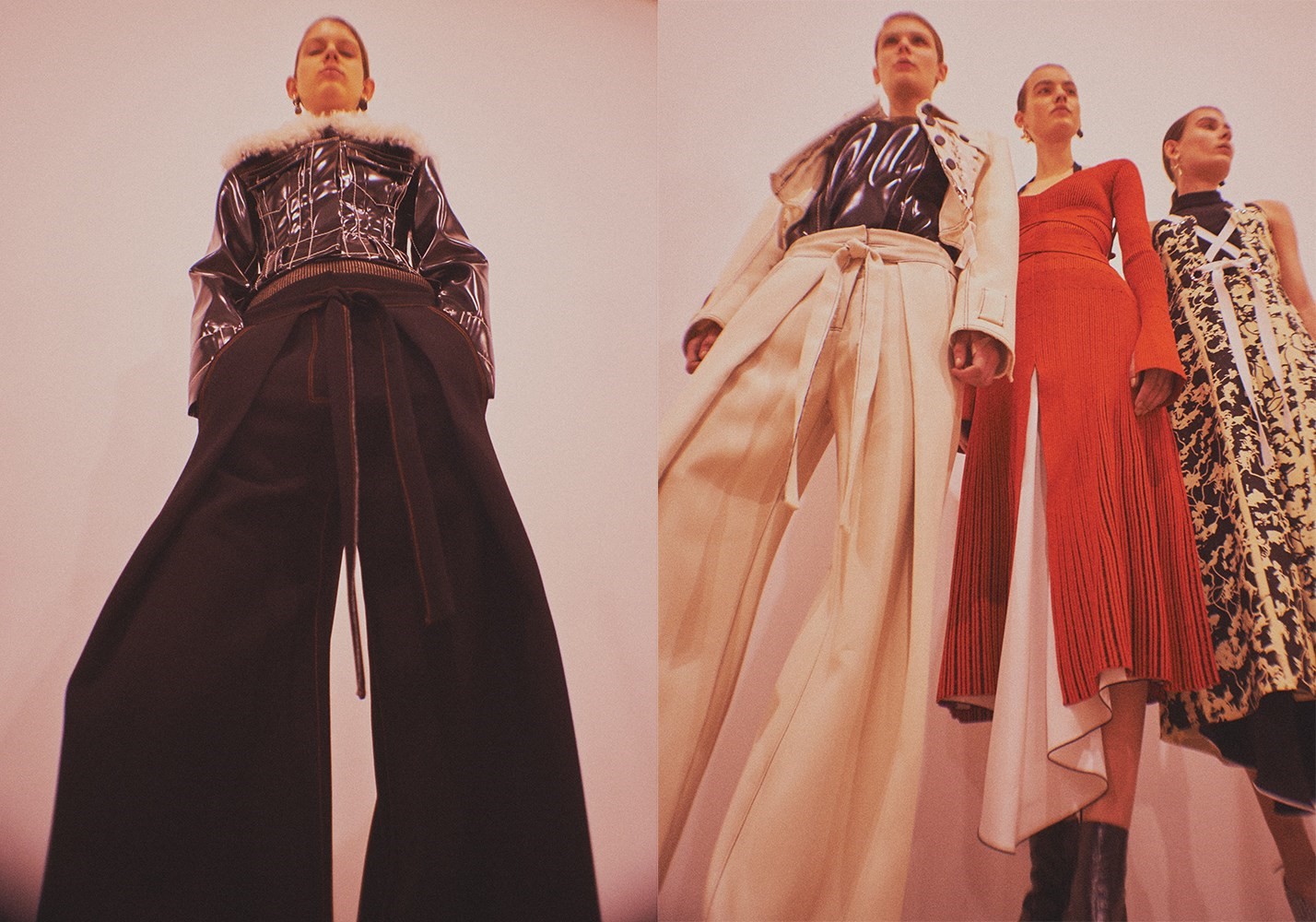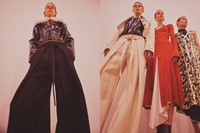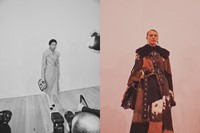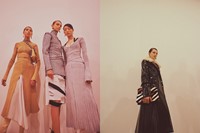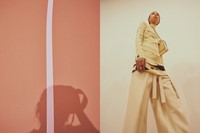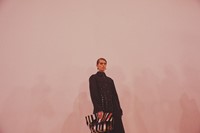The Whitney Museum of American Art has just de-installed a major retrospective of the work of Frank Stella. Luckily for Jack McCollough and Lazaro Hernandez of Proenza Schouler, it coincided neatly with their Autumn/Winter 2016 show. It’s the first to be held in the new downtown Whitney space, which in itself tied nicely to the fact that their A/W15 show was the last at the museum’s former home, a Marcel Breuer-designed building at 75th and Madison. It’s all very convenient. The Proenza boys couldn’t really believe their luck – not least in securing the Whitney's entire fifth floor, an 18,000-square-foot gallery that forms the museum’s largest space for temporary exhibitions. And what is a fashion show besides that?
It’s also fortuitous because Frank Stella was one of a clutch of artists McCollough and Hernandez had been looking at to inspire their latest wares. The others were Robert Smithson, Richard Serra and Raoul De Keyser – all predominantly American-based practitioners whose work focused on process, which in turn became the dominant theme of the duo’s winter show.
The artists’ work, asserted Hernandez, “wasn’t so much about the finished, end product. Their art was about the making of it.” Just as the fascination of a Proenza Schouler collection, while excited by the end product (for the particularly inspired, a selection of that was offered for sale straight after – they called it “Early Edition”), is all the richer for knowing the processes of thought and technique behind its creation.
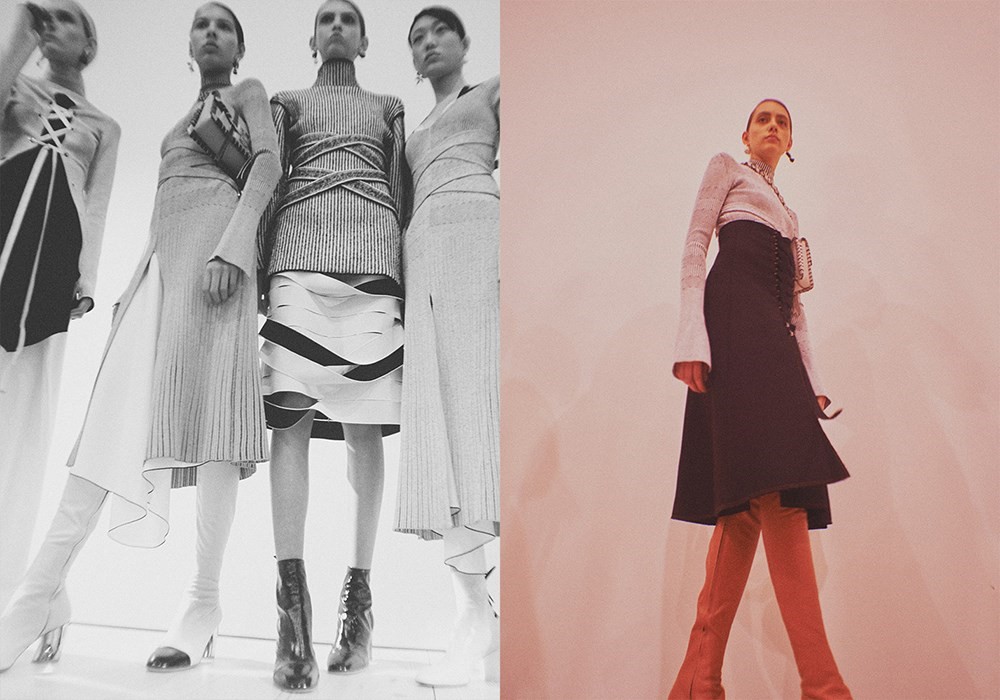
Frank Stella Vs. Proenza Schouler Look 35
Frank Stella’s black paintings, starting in 1959, used a regular brand of black paint (often household) alternated with unpainted strips of canvas. They’re powerful and graphic – emphasising the picture as an object in itself, rather than a representation. Proenza Schouler create objects too – their reflection of Stella’s “Black” paintings come in intricate devoré tops, a technique where a pattern is etched into a fabric, traditionally velvet, using acid. Hernandez, however, pointed out the white warp threads, exposed by the chemical eating away the stronger black of the weave. That was the actual devoré here – the velvet effect, in deeper black atop crepe, was actually a flock print. Another process, on a process.
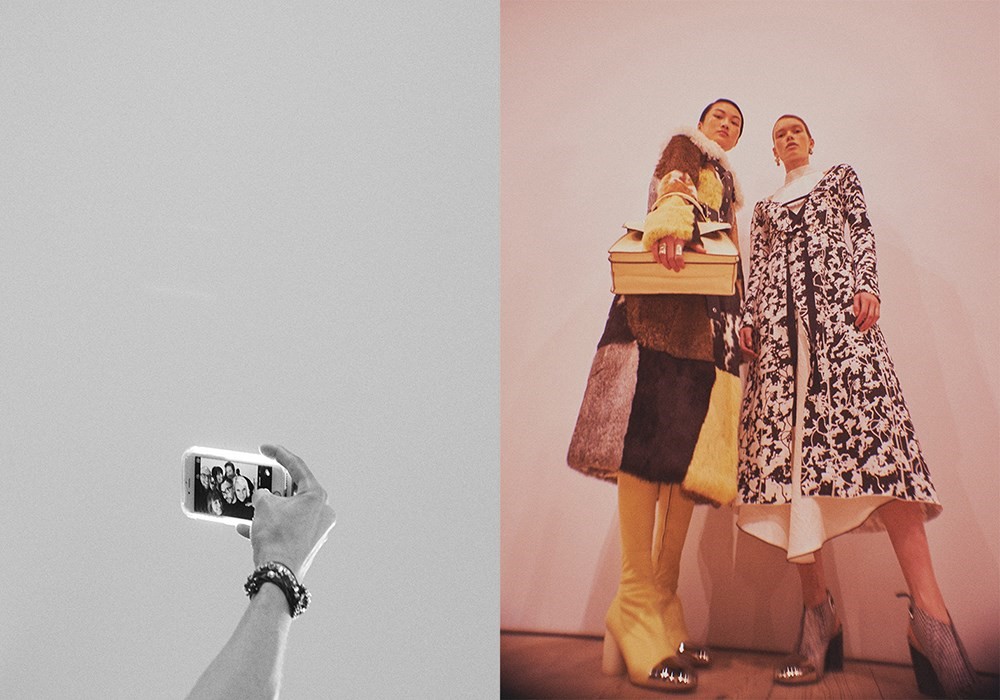
Robert Smithson Vs. Proenza Schouler Look 23
The meaty texture of this patchworked rabbit fur coat with a heavy shearling collar recalls Smithson’s 1970 Spiral Jetty. “We love the unpreciousness of rabbit,” says Hernandez. “It’s not super-fancy.” “It’s more humble,” adds McCollough. Smithson himself was influenced by the humble and humdrum – by dumper trucks excavating rock and soil and industrial sites while he lived in New Jersey. Both the earthy coat and the earthworks of Smithson share a sense of the tactile, and of contrasting elements. The process of patchwork allowed McCollough and Hernandez to mash together seemingly random earth-tones of the rabbit – natural browns, tans, greys and black – inspired by a vintage coat found on travels across the USA. Like Smithson’s land-orientated work, harmonising and also contrasting with the environment around it, Proenza Schouler’s coat of many (muted) colours seems at once familiar and yet new.
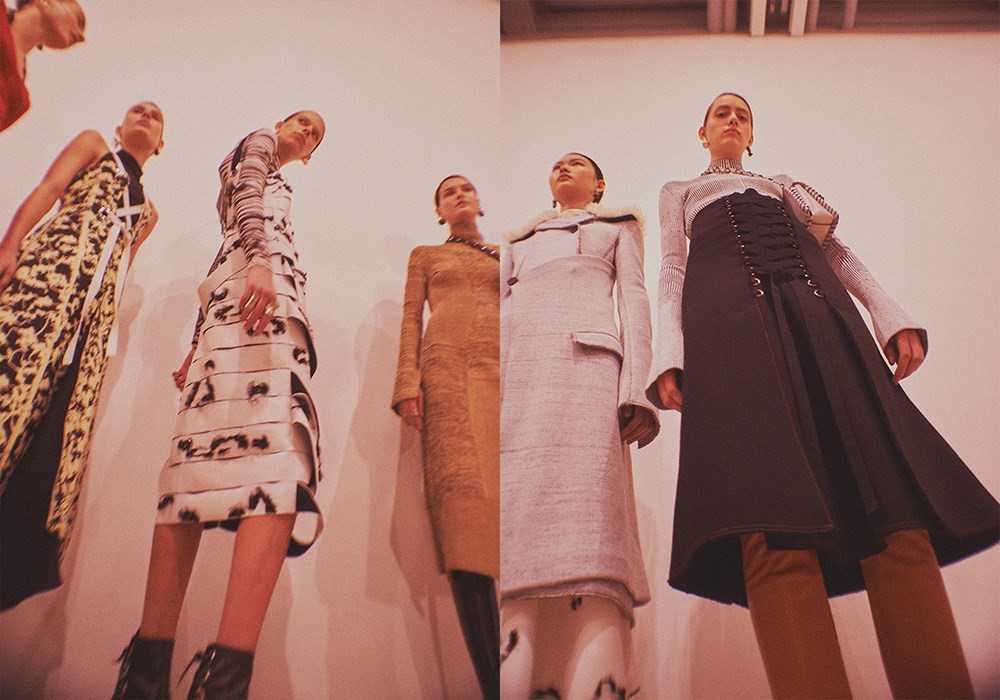
Raoul De Keyser Vs. Proenza Schouler Look 40
The dress here is actually a fil coupé, a fabric where extra, floating, weft threads are embodied in a jacquard fabric, then cut to produce decorative fringe. Proenza Schouler have always been obsessed with the off and the “wrong” in their work, and a fil coupé is almost the “wrong” side of a fabric. Flip this one over, and it’s daubed with black on the pale crepe, visually similar to Raoul De Keyser’s oeuvre, where sparse patches of paint barely populate pallid canvases. The dress itself is constructed not from a single piece of fabric but multiple horizontal bands, mimicking De Keyser’s brushstrokes. And, as it’s an evening gown, it’s then subjected to a third process, an embroidery of large jet crystals. Just to make everything that little bit more complex.

Richard Serra Vs. Proenza Schouler Look 9
“Control and release – those were two ideas we were throwing around,” said Jack McCollough, gesturing at an oversized, short wool-viscose tweed jacket, jean-cut like a classic piece of American apparel (not the brand, but rather the actual historical stuff) but crisscrossed with lacing. Tense, an oversized shape pulled in against the body, it recalled immediately the work of Richard Serra. Well, it recalled Serra because McCollough and Hernandez had cited him as a reference, and the jacket is the same rusty shade as his famous, curving steel installations. But Serra’s sculptures, dwarfing their observers, a tense game of control and release, have an affinity with the jacket – as much as a forty-something tonne metal sculpture can with a nice bit of outerwear. “We like this idea of more controlled tops, then laces unravel and everything kind of releases,” says Hernandez. “It’s about silhouette and proportion.”
Incidentally, Jack and Lazaro weren’t sure what would fill the space after their fashion show. They thought it may be a group show, of American artists. How appropriate.
